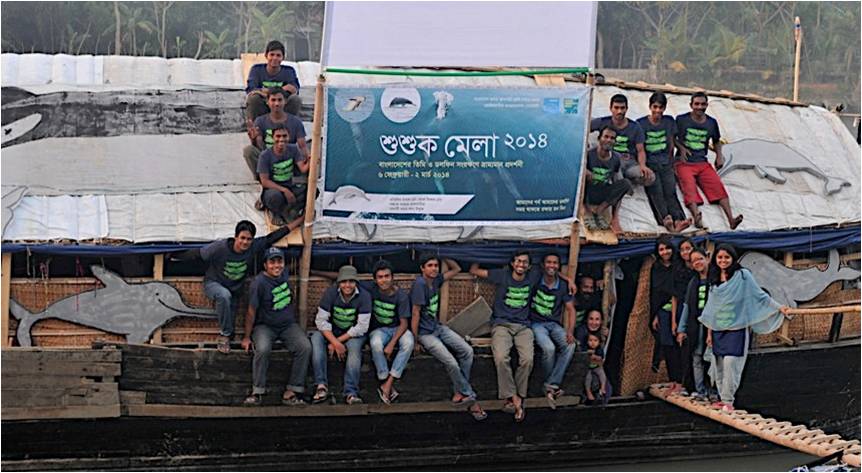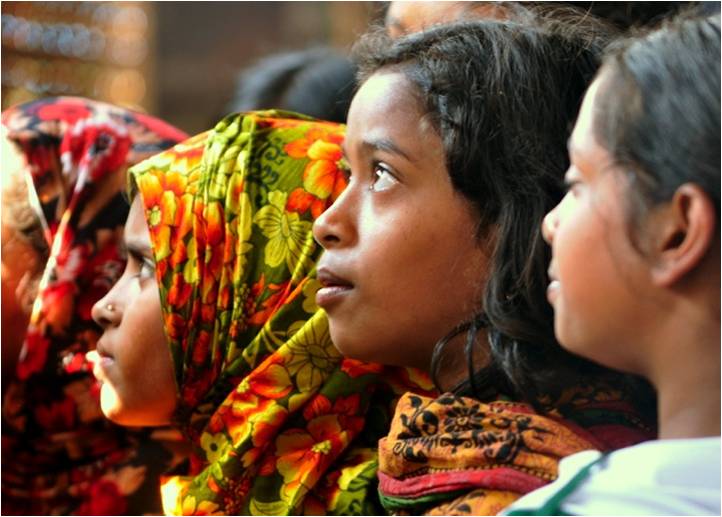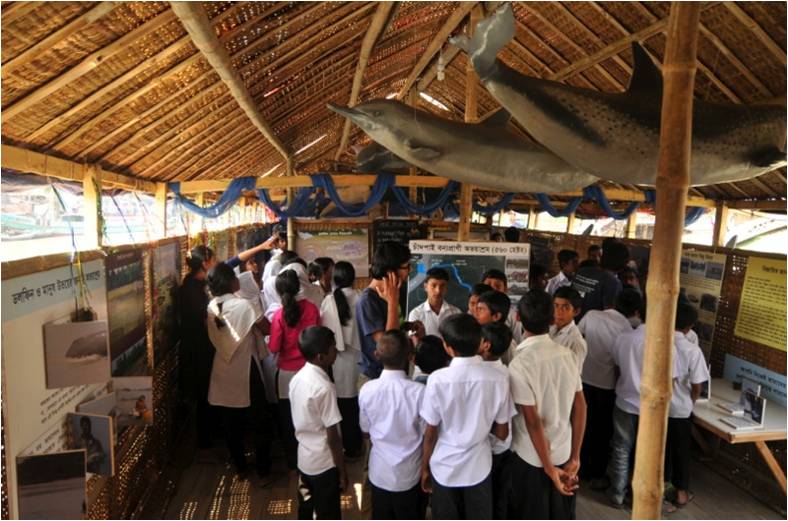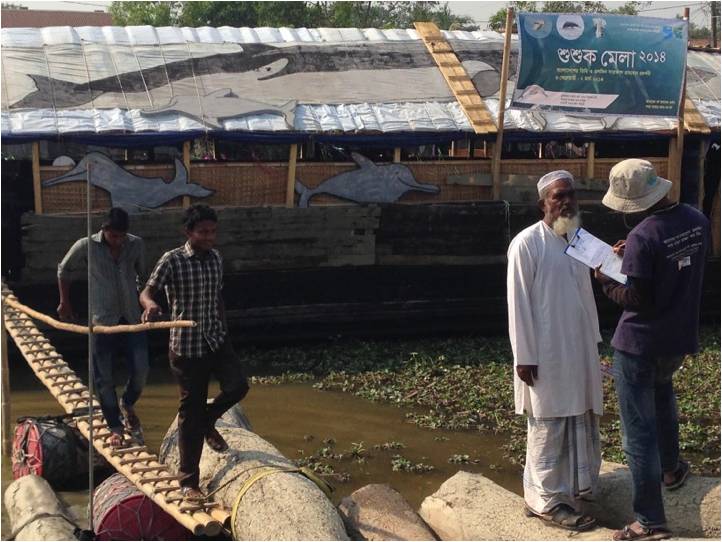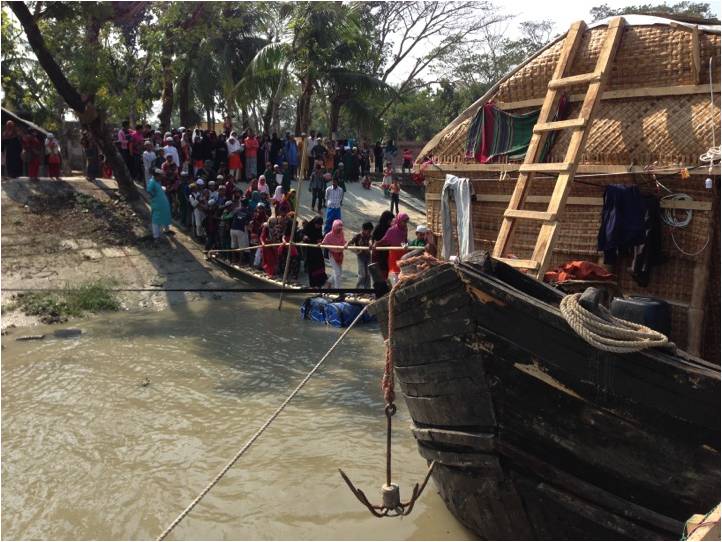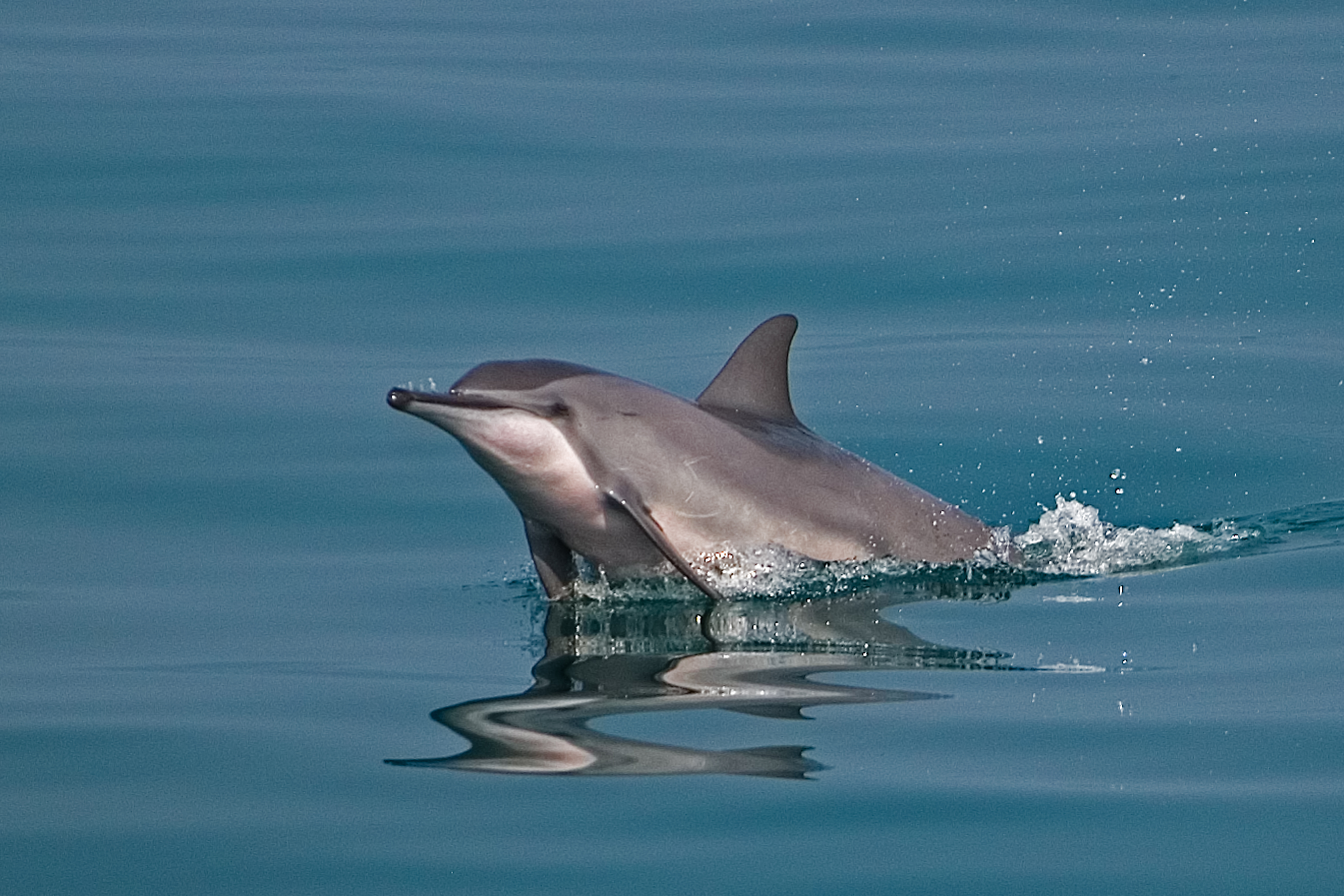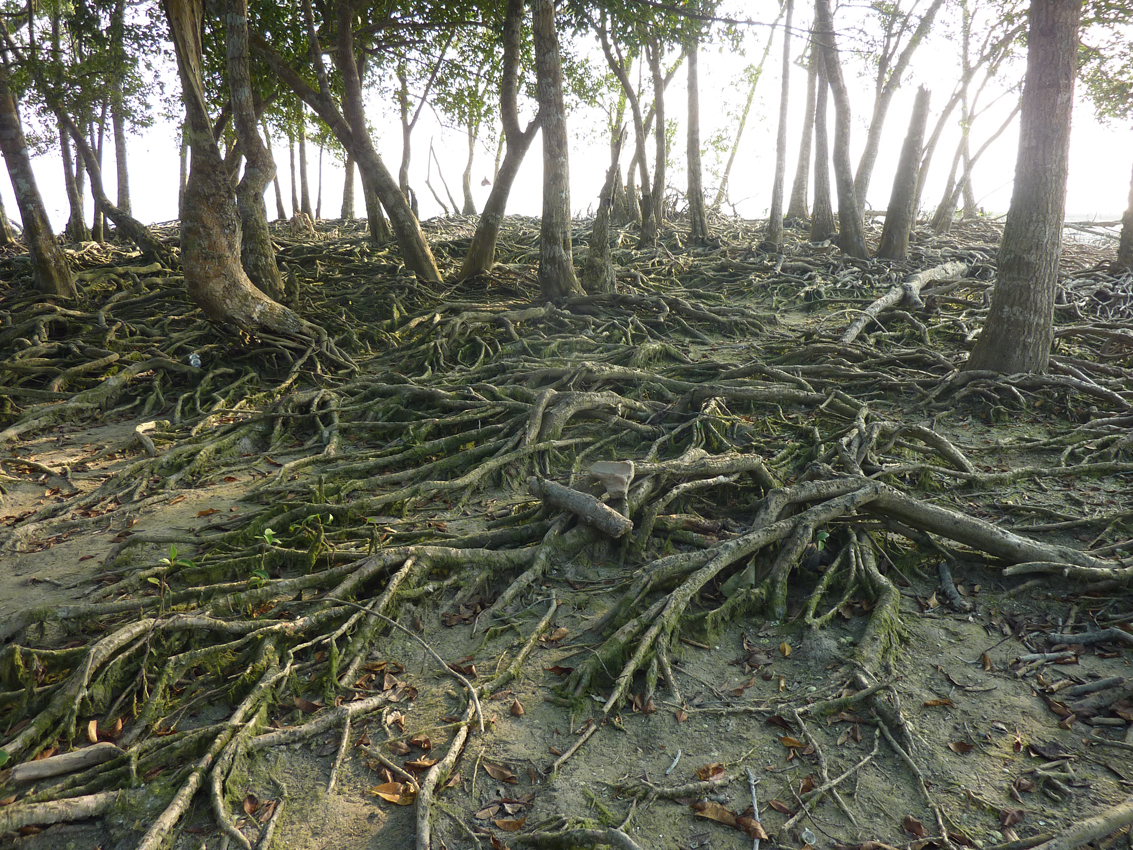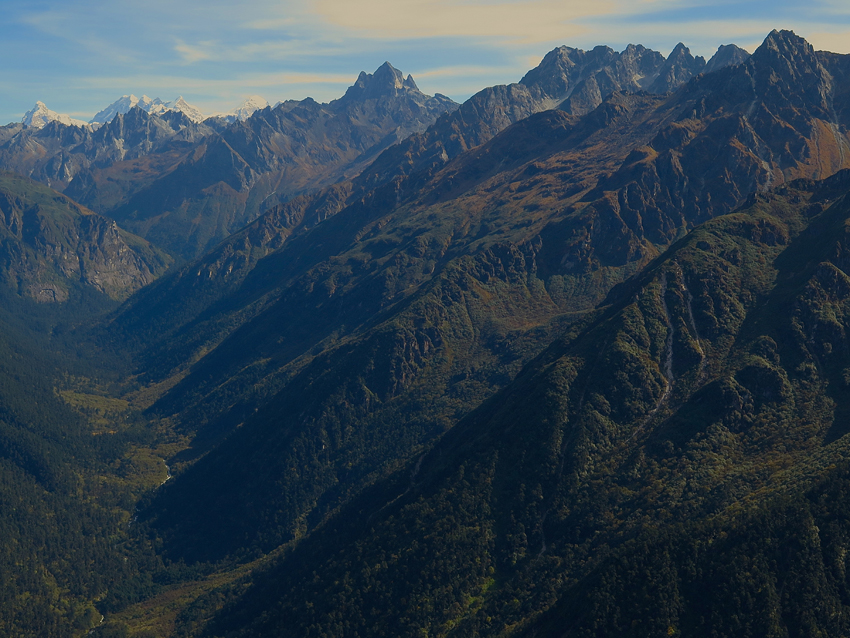Share our smiles: Interactive educational outreach to save threatened coastal cetaceans in Bangladesh
Conservation is about people, and a key part of SOS Grantee Wildlife Conservation Society's (WCS) work to save threatened coastal cetaceans in Bangladesh explains Brian D. Smith, WCS Programme Director. That entails reaching out to fishing communities in culturally respectful and interactive ways.
Early on in the project, Brian’s team realized that significantly reducing cetacean mortalities would require far-reaching and effective education targeting not only the participating fishermen but also the communities where they live. “We needed to build a strong constituency of community support”, he summarises.
With additional funding from the Foundation for the Third Millennium the project team convened a boat-based, interactive exhibition attracting almost 17,000 visitors in 15 local communities bordering the Sundarbans where the fishermen live. Many participants came from remote villages inhabited by coastal gill-net fishermen whose nets entangle and kill cetaceans in the Bay of Bengal.
The exhibition incorporated informative panels and interactive elements including life-size models of dolphins, games, a bioscope showing the live birth of a dolphin, and a showcase with dolphin bones, skulls and teeth.
All these materials provided visitors with visual and tactile experiences as well as an emotional connection to the globally significant cetacean diversity in their country’s waters – including both freshwater and marine cetaceans of priority conservation concern.
Groups of ten to fifteen visitors were guided by one of the seventeen university student interpreters who participated in an intensive two-day training workshop convened by WCS prior to the exhibition.
The outreach campaign included evening shows of two internationally acclaimed documentary films in Bengali language Shushuk, Our Rivers and Mankind and Exploring our Waters.
Entry-exit interviews of almost 350 visitors indicated a substantial increase in their knowledge about dolphins and measures being taken for their protection. For instance, between the entry and exit interviews
1. The percentage of interviewees who understood that dolphins need to come to the surface to breathe increased from 69.5% to almost 100%;
2. The percentage of those who could describe some of the threats to dolphins, increased from 55.6% to almost 90%;
3. The percentage of those who knew about laws prohibiting the possession of dolphin meat and oil, increased from 13.0% to almost 95%;
4. The percentage of those who demonstrate knowledge about the diversity of dolphins in Bangladesh increased from 16% to 95%.
“We also learned from the exhibition that educational outreach for conservation entails much more than simply communicating knowledge about the biological importance of species and roles they play in healthy aquatic ecosystems”.
“It also requires capturing hearts, which can be seen in the smiles of the visitors who attended the event”. The overwhelmingly positive reaction to the Shushuk Mela from visitors of all ages and backgrounds is an inspiring story.
Through this interactive, boat-based exhibition WCS has achieved a measurable increase in the knowledge of local fishing communities about cetaceans and opportunities to save them while sustaining fishing livelihoods.
Help SOS Protect More Species
Protecting threatened species is critical because we are protecting parts of our life support system. Wildlife and nature supply us with so many basic necessities from food to fuel and shelter, but also inspiration in art, language and design to name but a few examples. Right now we are protecting more than 200 species please contribute to SOS to help us continue to protect more of our natural heritage.
